
 Ronald Diaz/Conservation International
Ronald Diaz/Conservation InternationalThe amphibious webbed mouse and blob-headed fish are among 27 new species discovered by scientists in Peru.
They were found on an expedition to Alto Mayo – which includes the Amazon rainforest – by scientists from the non-profit Conservation International and members of local indigenous groups.
Conservation International says up to 48 other new species are also likely to have been found, although further study is needed to determine whether they are new.
“The discovery of so many new species of mammals and vertebrates is truly incredible, especially in such a human-influenced environment,” said Trond Larsen, senior director at Conservation International.
Alto Mayo is a protected area in northern Peru that includes multiple ecosystems and indigenous territories.
It has a relatively high population density, which puts pressure on environmental protection through deforestation and agricultural expansion, Conservation International said.
Yulissa Toy, an Awajon woman who helped with the research, said the report “allows Awajon to protect our culture, natural resources and lands,” because it gives them a better understanding of ecosystems.
“(The Awagon tribes) have extensive traditional knowledge about the forests and the animals and plants they live alongside,” Larsen said.
The mission also found a new species of dwarf squirrel, eight species of fish, three species of amphibians, and 10 species of butterflies.
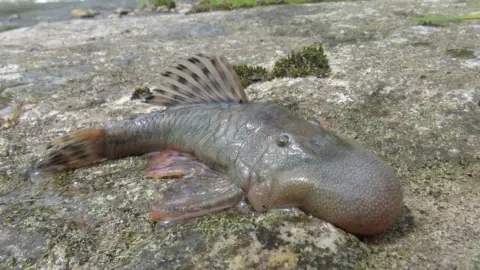 Robinson Oliveira/Conservation International
Robinson Oliveira/Conservation InternationalThis “bubblehead” fish is a new discovery to science, but the Oajon natives who helped with the expedition already knew of its existence.
Ichthyologists were particularly shocked by its enlarged head, something they had never seen before.
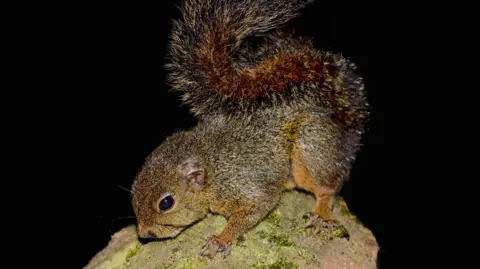 Ronald Diaz/Conservation International
Ronald Diaz/Conservation InternationalThis dwarf squirrel is just 14 cm (5.5 in) long, half the length of the average UK gray squirrel, which ranges from 24 to 29 cm long, according to the British Squirrel Agreement.
“(It) fits in the palm of your hand easily. A beautiful, gorgeous chestnut brown color, and very fast,” Larsen said.
“He jumps quickly and hides in the trees.”
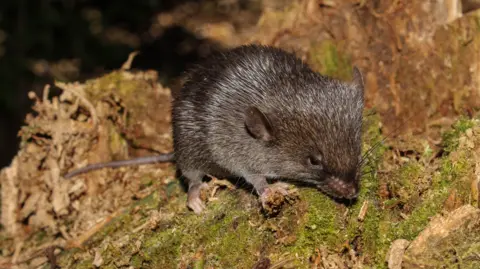 Ronald Diaz/Conservation International
Ronald Diaz/Conservation InternationalScientists have discovered a new species of spiny mouse – named after the tough guard hairs on their coats, which function similarly to hedgehog spines.
They also found a new “amphibian mouse” that has partially webbed feet and eats aquatic insects.
It belongs to a group of semi-aquatic rodents that are considered among the rarest rodents in the world, with the few known species having been observed only a few times by scientists.
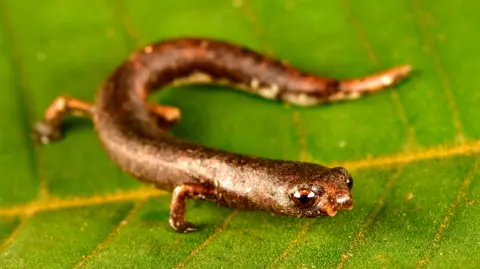 Trond Larsen
Trond Larsen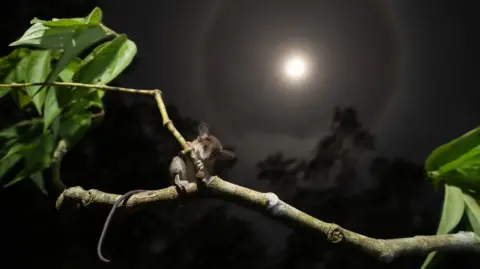 Marlon Dagg/Conservation International
Marlon Dagg/Conservation International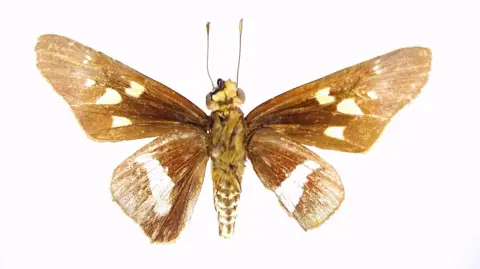 Gorky Valencia/Conservation International
Gorky Valencia/Conservation International








